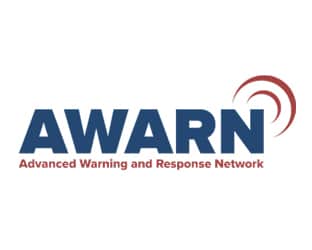Last week’s use of a 90-character Wireless Emergency Alert (WEA) to help catch the suspect in the recent New York and New Jersey bombing cases serves as the latest example of how new technology can be utilized to improve public alerting.
Wireless carriers have been less than enthusiastic in including photos and active links because of bandwidth constraints.
However, another solution is coming, subject to the FCC’s approval.
 The Advanced Warning and Response Network (AWARN), under development by television broadcasters and tech companies, will give consumers not only text alerts, but also photos, video, maps, and links for notifying authorities. It is designed to reach smart TVs, tablets, and future smartphones independently of the cellular networks.
The Advanced Warning and Response Network (AWARN), under development by television broadcasters and tech companies, will give consumers not only text alerts, but also photos, video, maps, and links for notifying authorities. It is designed to reach smart TVs, tablets, and future smartphones independently of the cellular networks.
It can also be used as an extension of television station news alerts, reinforcing a station’s brand during a time of urgency.
“AWARN will give consumers a whole new level of information at their fingertips,” said John Lawson, executive director of the AWARN Alliance, a coalition of major television station groups and technology companies that is developing the new alerting system. “In a situation like the recent bombings, AWARN will deliver surveillance video, evacuation routes, hospital wait times, and many other forms of rich-media content.
AWARN will utilize television airwaves, and leverage capabilities that are designed for ATSC 3.0. The Alliance has joined other groups in ask the FCC to approve the voluntary use of the Next Gen TV standard by local TV stations.
“AWARN also will deliver multilingual and accessible alerts, plus active links to social media and reporting to authorities,” Lawson said. “It’s a major upgrade to alerting, but we need the FCC to give us their permission to use the underlying technology.”




